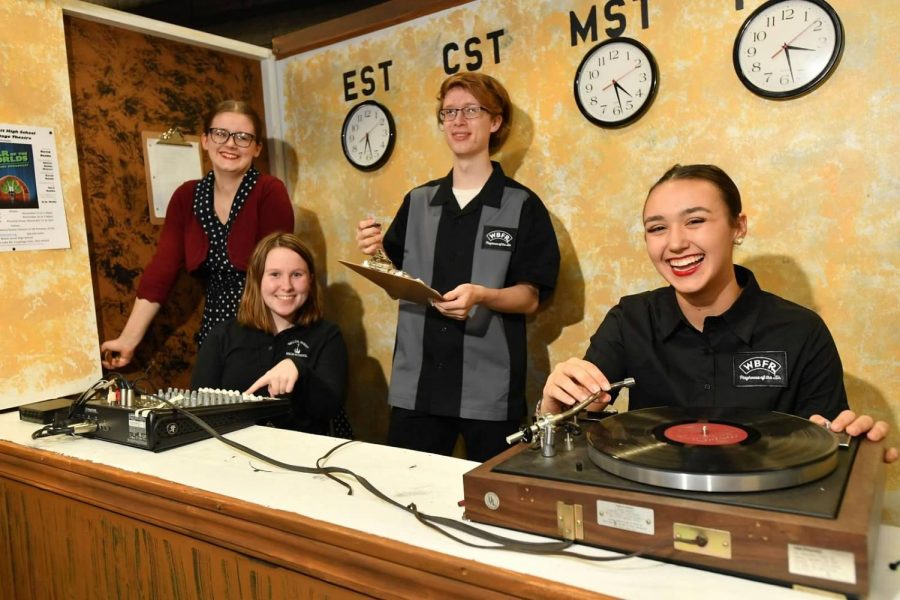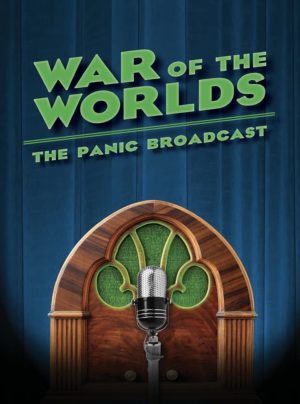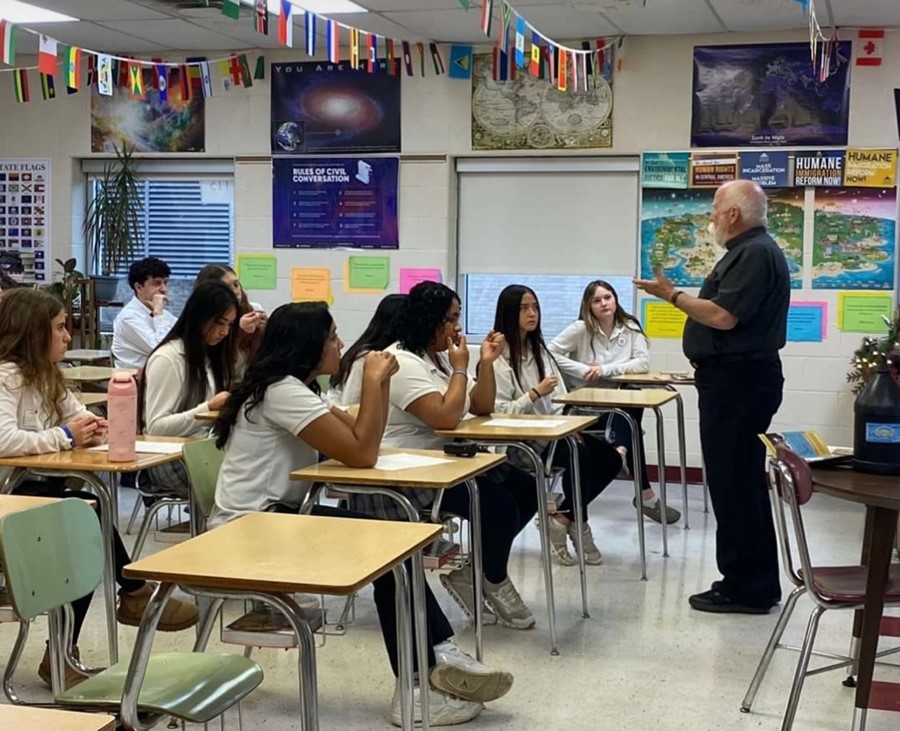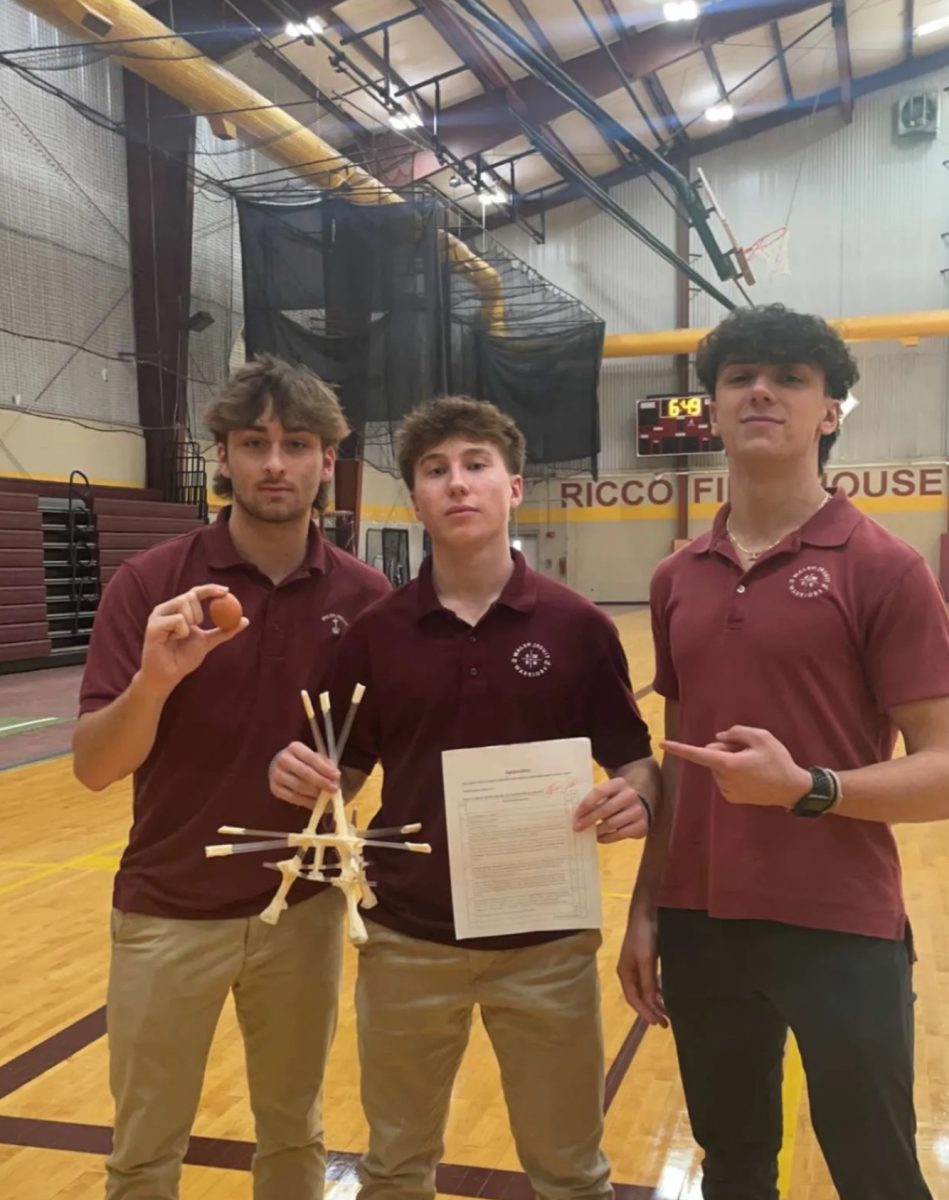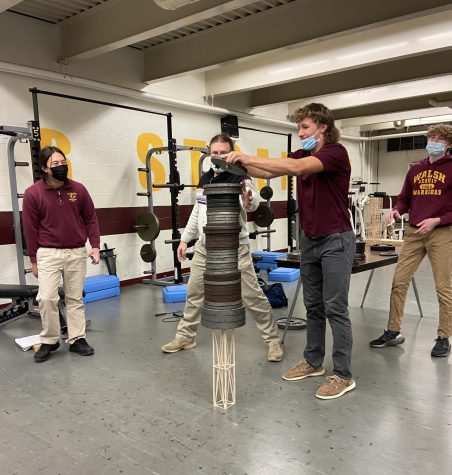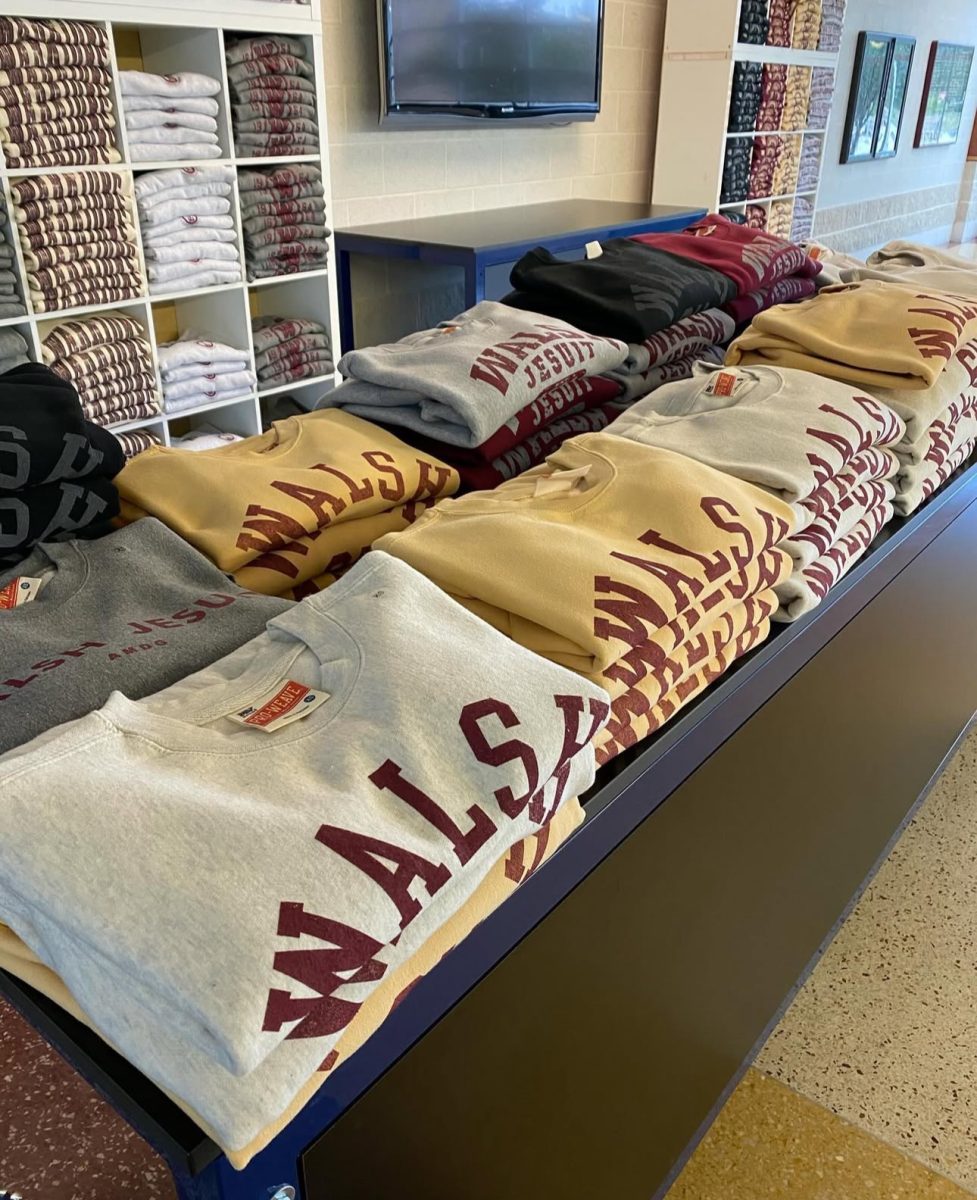CenterStage takes on theater challenge
Famous 1938 radio broadcast “War of the Worlds” lives on today
Members of the CenterStage Theater take on the challenges presented by putting on War of the Worlds.
November 25, 2019
“The sky is falling! The sky is falling!” The iconic phrase coined from the movie “Chicken Little” expresses the chaos that can result from false information. CenterStage Theatre’s fall production of “War of the Worlds: The Panic Broadcast” conveyed a similar panic caused by the media.
On October 31, 1938, John Houseman produced a radio broadcast, narrated by Orson Welles, about Martians landing on Earth. Despite an announcement before the broadcast that everything was fictional, people who tuned in later thought the fictional Martian takeover was an authentic news broadcast. This arguably caused panic throughout the US.
Houseman and Welles’s decision to broadcast the show has been controversial for eighty years. Movies, essays, and plays have been written about the hysteria that their decision caused.
CenterStage director Dave Banks said, “When searching for this year’s falls play, I was looking for something outside the norm. When I saw what “War of the Worlds” was about, a radio play within a radio play, actors portraying actors portraying actors, and when I read the script and realized how much it relates to today’s topic of ‘fake news,’ I knew it was the perfect choice.”
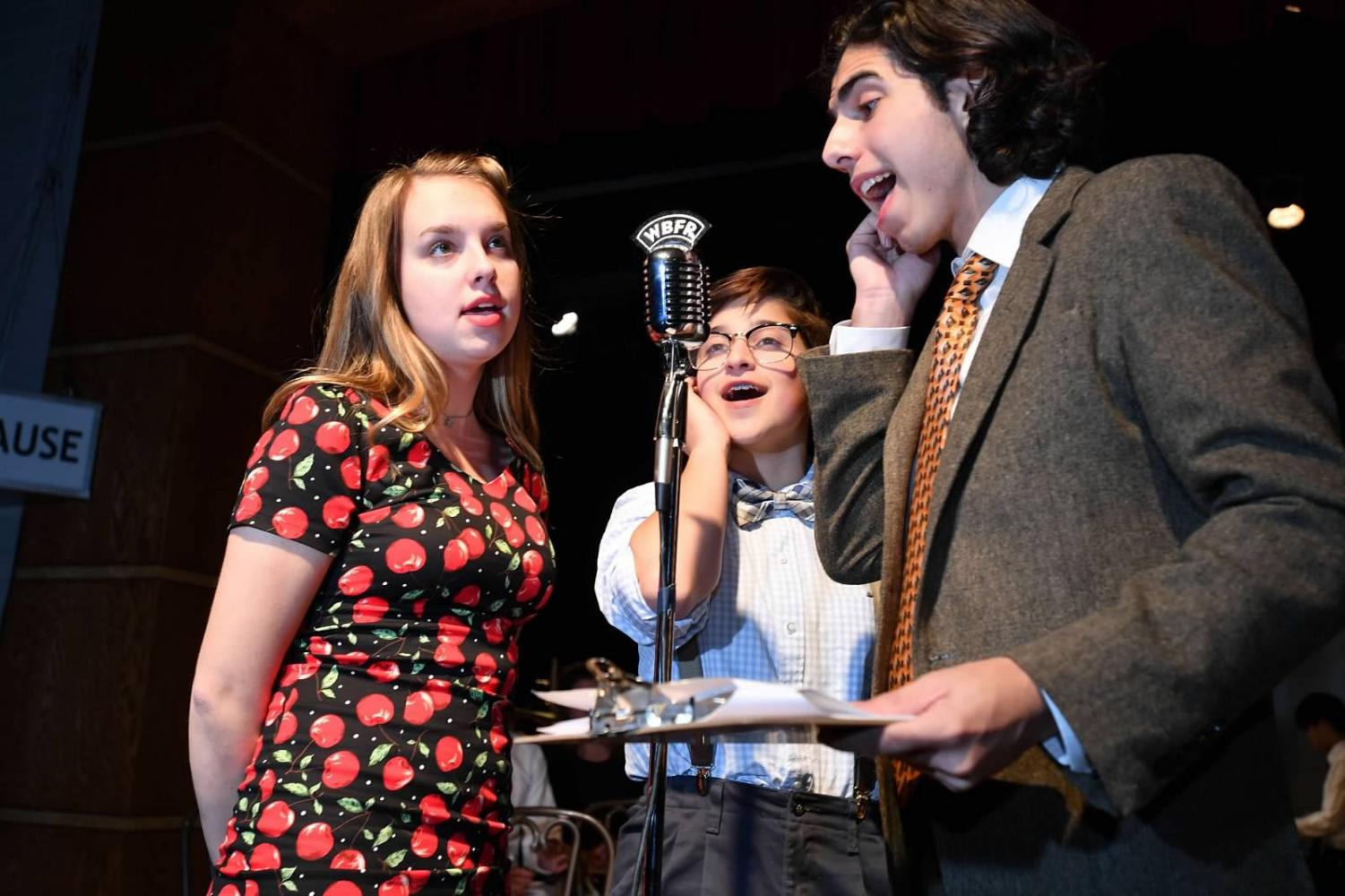
“The Panic Broadcast” takes place ten years after 1938 original production. In this play, the WBFR Playhouse of the Air station re-enacts not only to the “War of the Worlds” broadcast but how Orson Welles and his colleagues at the CBS radio station prepared for their program and reacted to the chaos it created.
Responding to the complicated plot, audience member Ke’Tura Allen, a junior, said, ““It was the most chaotic but neutral energy I’ve been around. I sat in the front row which helped me stay interested in the show the whole time.”
The CenterStage set created an old-fashioned, ‘40s style radio station, featuring a live studio orchestra, stage management booth, and sound booth. The costumes, hairstyle, and makeup were authentic to the time period and helped bring characters to life. In particular, leading lady senior Tessa D’Errico, senior Alylah Brown, and junior Sidney Katona stood out with their period accurate hairdos. Costume designer Cherie Meyers did a wonderful job of finding period costumes that suited everyone’s particular look and style, like senior Jillian Bremner’s high-waisted pant ensemble.
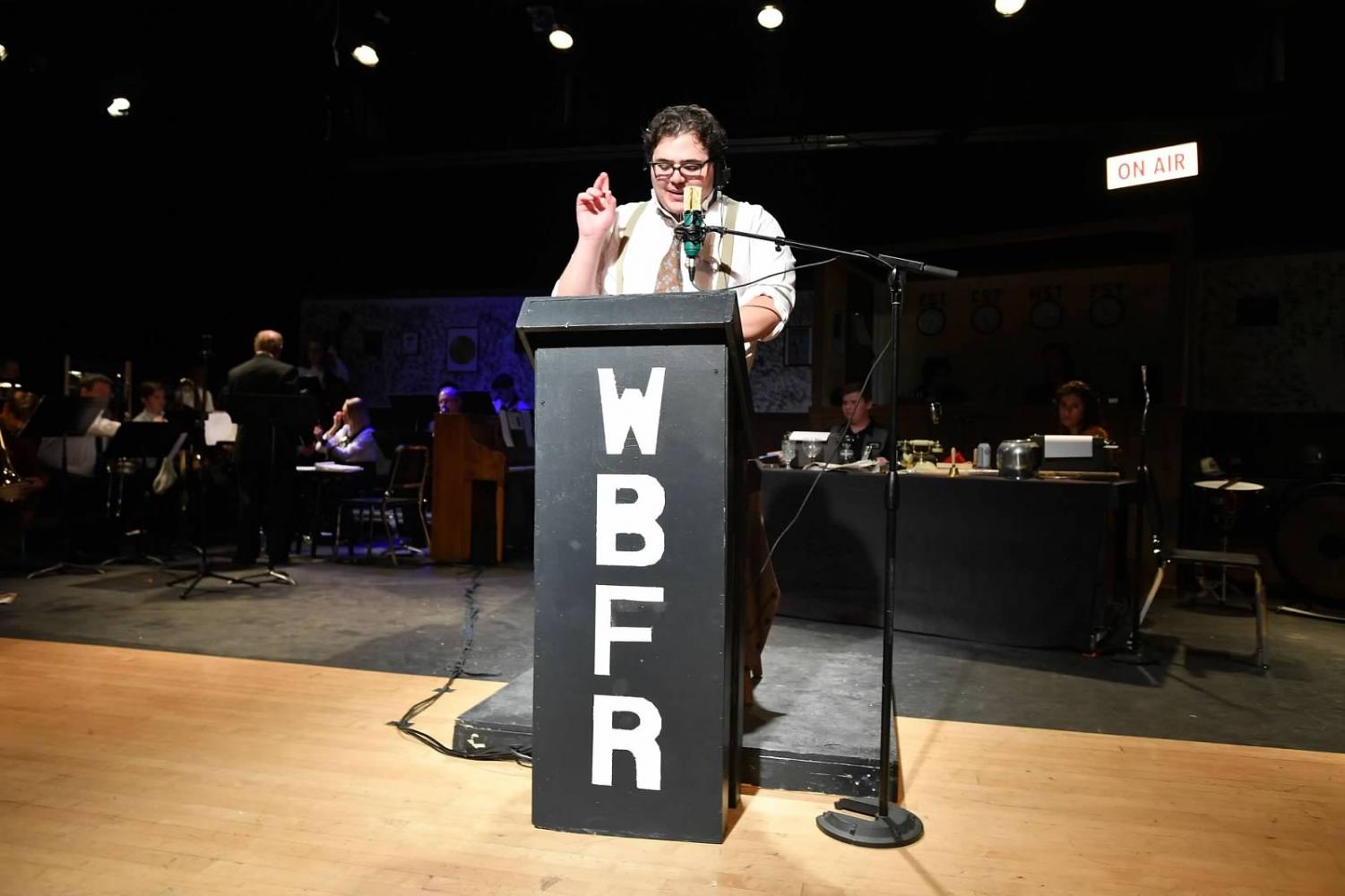
Senior Emily Alessia said, “My favorite part about the play was definitely the hair, makeup, and costumes. Everyone looked great, and it helped bring the show to life.”
Actors playing multiple roles challenged the audience, especially when the play was already confusing in and of itself. But the actors and actresses were great at individualizing the different characters. For example, Connor Cline, a senior, used different voices which helped set his characters apart.
Leading man senior Dom Mazullo, who portrayed Freddie Fillmore, Orson Welles, the Narrator, Professor Richard Pierson, and Brigadier General Smith, rose to the demands of portraying multiple roles. From his mannerisms to his Forties radio voice, he fully encapsulated each character and created a special chemistry with not only his fellow actors and actresses on stage but with the audience as well.
The ending scene of the show, written by Mr. Banks, featured cast members holding up radios which played news clips about controversial events occurring in the world today. It provided commentary on how broadcast media plays an important role in reporting events that are not “fake news.”
WJ Alum Jojo Radecky, ’19, said, “I really enjoyed the end of the show with the different vintage radios and various news broadcasts from different decades. It was a very powerful scene and was beautiful to watch.”

